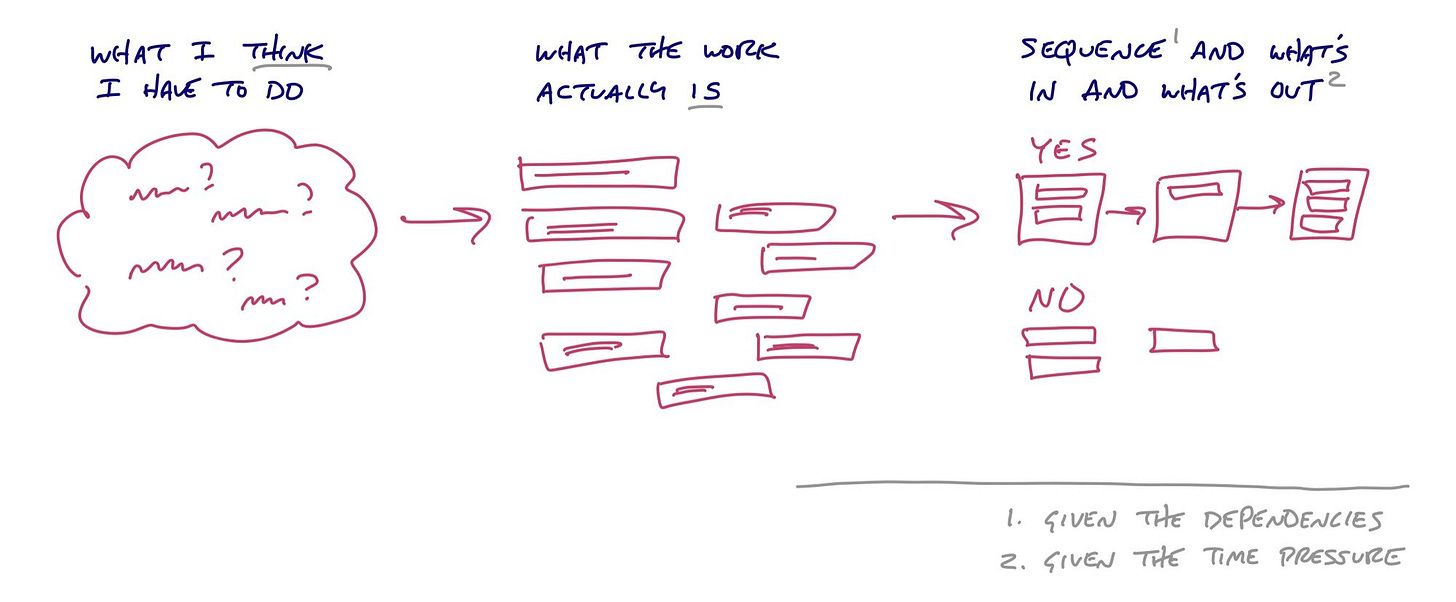Sunday Links: attention limit, the main flaw of to-do apps, and Japanese manholes
Share only the best you have
Hey there!
It’s the 8th installment of my Sunday Links series. But this piece of writing is a bit different from the previous.
Some of you asked me if I can make an audio version of my emails, so I recorded a voiceover for it. If you prefer listening rather reading, hit the play button at the top of this email and enjoy.
Enough with the introduction, let’s see what I’ve got for you today.
The cover depicts geese grazing around the Azerbaijani village. Love this shot!
Findings I’ve enjoyed this week
Too much information, too little time. In one of my Russians essays I wrote about an extremely high level of noise in our lives and how we need to turn down the volume on the world to be able to hear ourselves. This article complements my thoughts about that.
The authors explain and refer to the recent scientific studies on how the brain separates important from unimportant things in our fast-paced media world. Here’s a quote that might be shocking:
…An average person living today processes as much as 74 GB of information a day—that is as much as watching 16 movies—through TV, computers, cell phones, tablets, billboards, and many other gadgets.
Every year it is about 5% more than the previous year. Only 500 years ago, 74 GB of information would be what a highly educated person consumed in a lifetime, through books and stories.
We’re overdosed with information these days. We need a break. We need to filter out what’s coming in to protect our attention and focus, and be able to have enough of it when real challenges arise. Because our attention is very limited.
Beyond to-dos. Ryan Singer, author of Shape Up, brings up a profound idea that traditional to-do tools are made to account for work, not figure out what the work is. I am with him on that one.
I always feel the struggle picking up a to-do app. With 99% of the apps I realize that they are only good for making lists of tasks and maybe collecting some information, but they don’t allow to define the work I have to do to complete those tasks. That’s a bummer.
I often need a place to write down ideas for posts, for my products and projects, for this newsletter, etc. Later I get back to those ideas to work on them, shape them and develop them into a product, a service, or a post in my blog. And for that I have to use some other tool because the one it’s written in is not suitable for shaping my ideas or managing the process of the future work.
So Ryan shares his view on how those to-do apps should be designed to help us figure out what to do beside just keeping a list of things we think we should do.
The unique beauty of Japan’s artistic manhole covers. Even though I knew that Japanese stand out in plenty fields when it comes to design—electronics, manga, city environment, robots—I didn’t expect to find out that there’s a whole culture of manhole leads in Japan. Some regions and cities even hold annual manhole exhibitions.
The short film below reveals the process of manhole production at Hinode factory. Beside the casting and molding there are many steps and operations I wasn’t aware of. I also was surprised by how much of the work is being done by humans, manually.
Until next time!
BTW, if you like these, and think someone else might too, please forward it on. They can subscribe to my newsletter right at my home page. I’d appreciate that.
Take care!
Evgeny
Tyumen, 27 August 2023
Ask me anything via email: evgeny@lepekhin.me
Follow me on Mastodon, Substack, or grab my RSS feed.
Donate via Boosty. If you’re in Russia, donate via Tinkoff or Yoomoney.




Крутой формат совмещения статьи и аудио. Мне, как автору подкаста, понравилось! Взял на вооружение себе на будущее.
I liked the audio sharing idea
Thanks for adding that